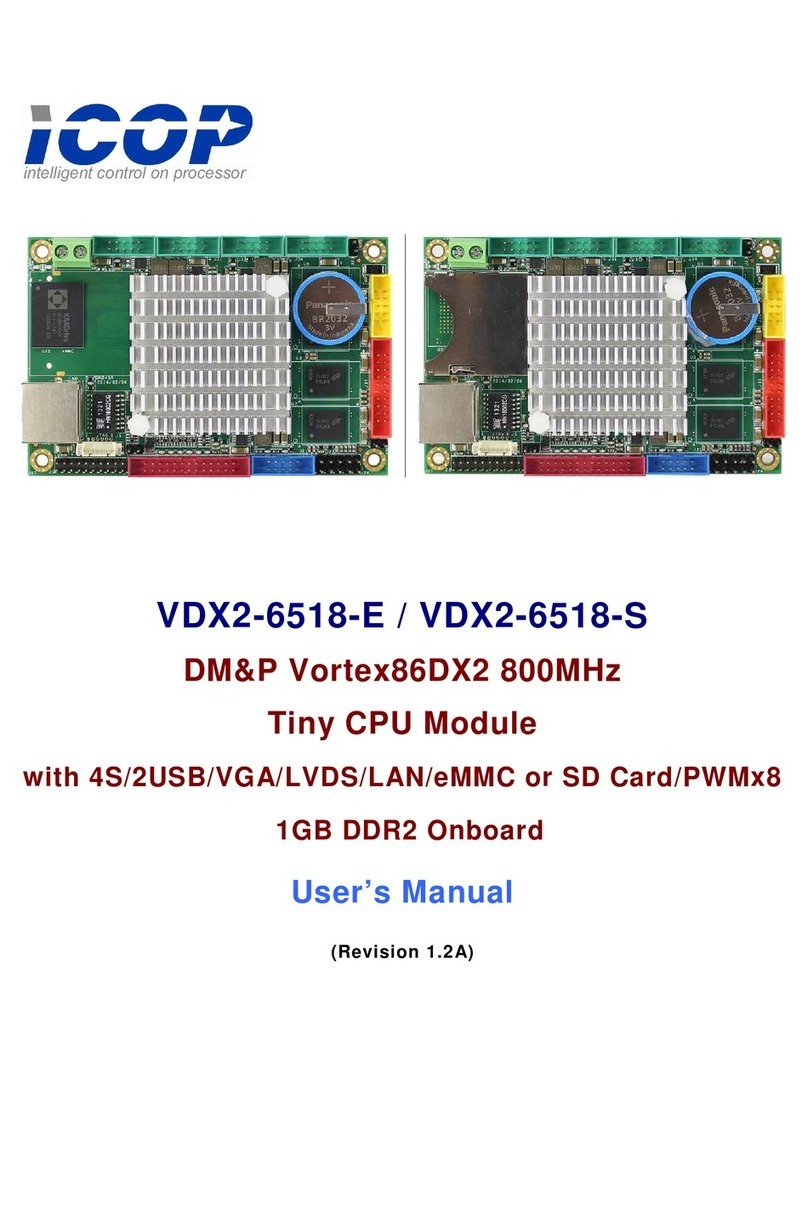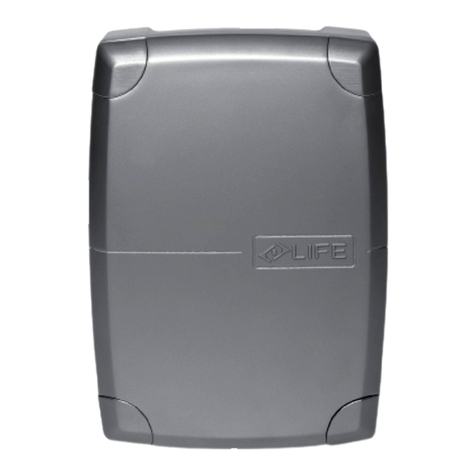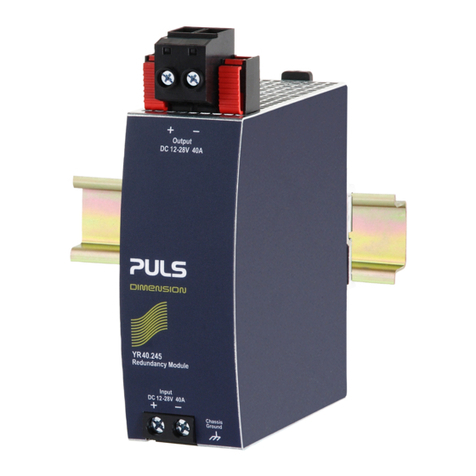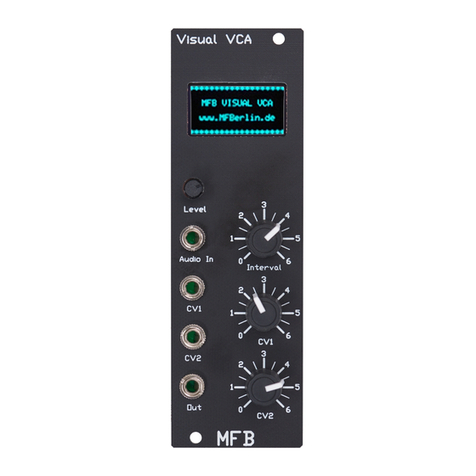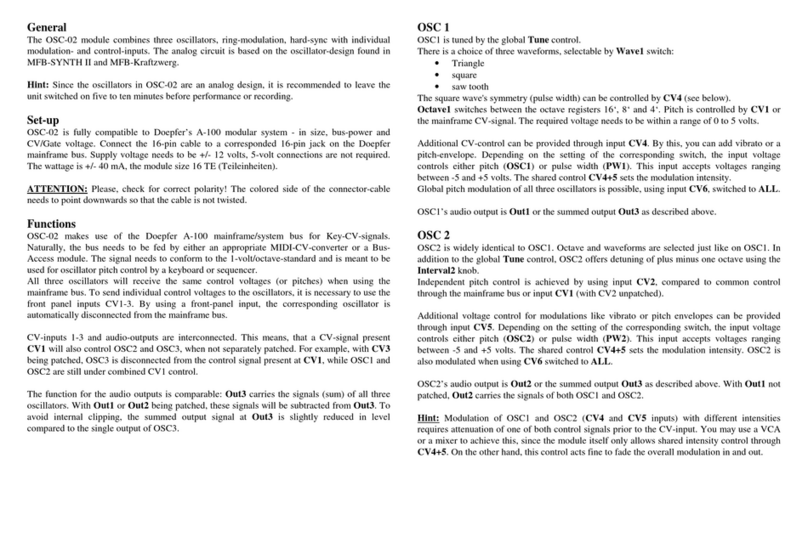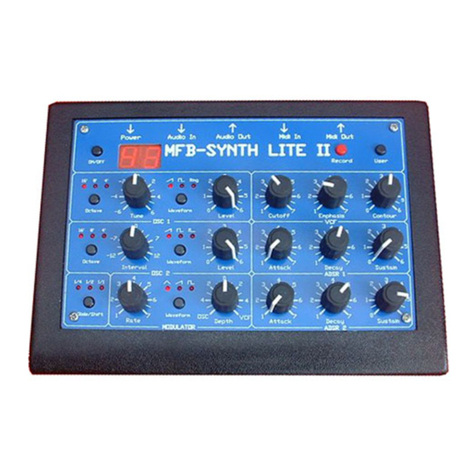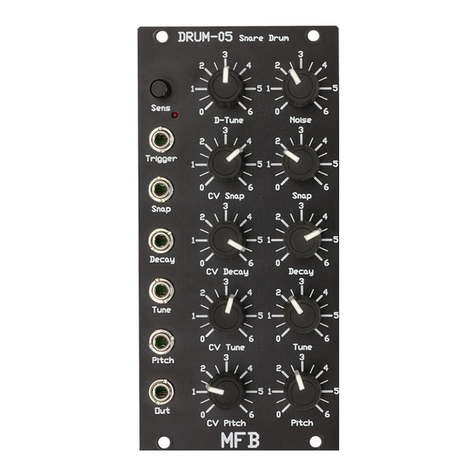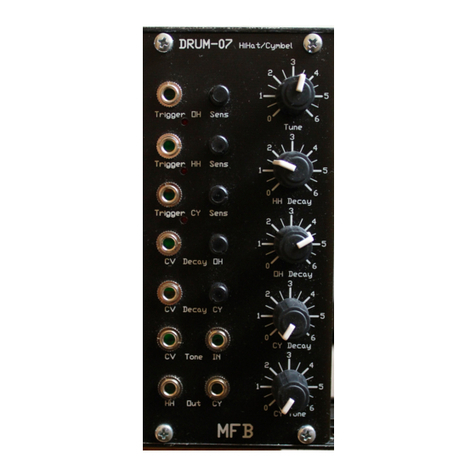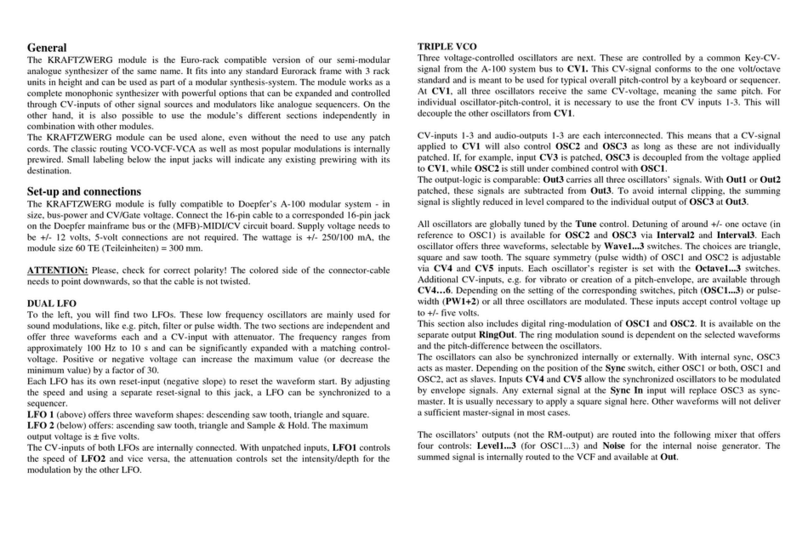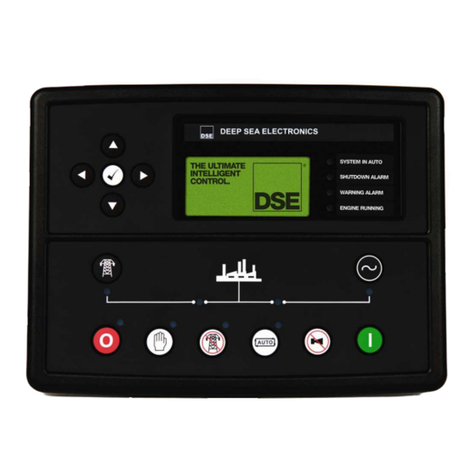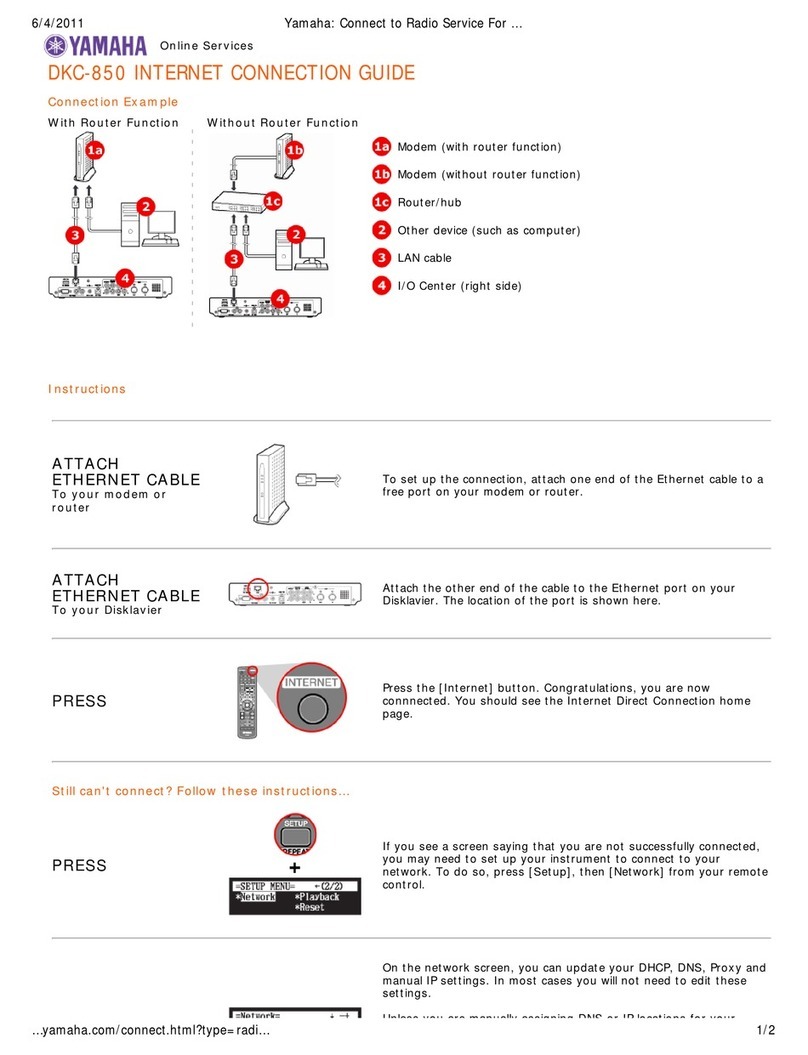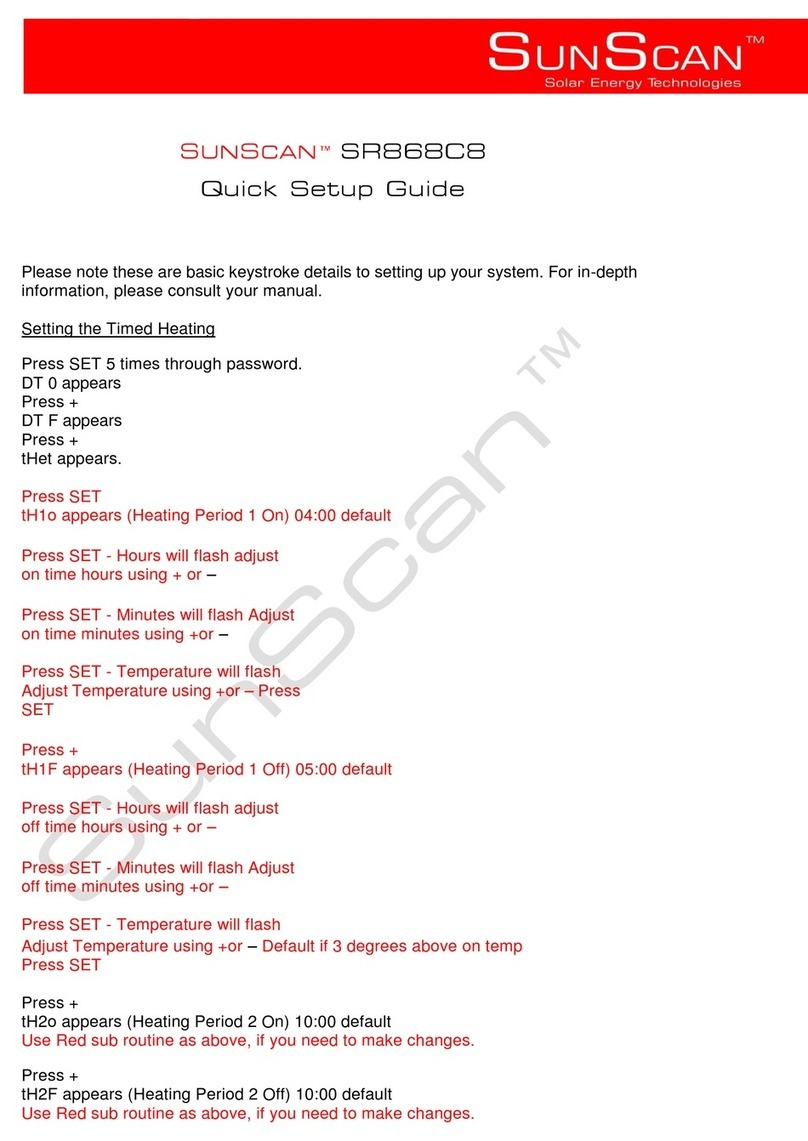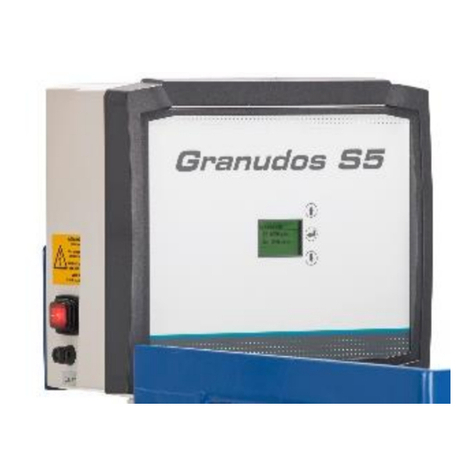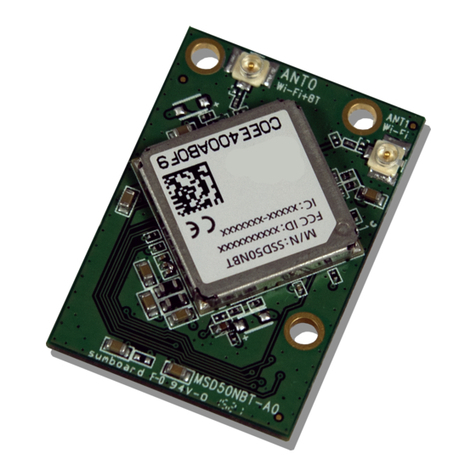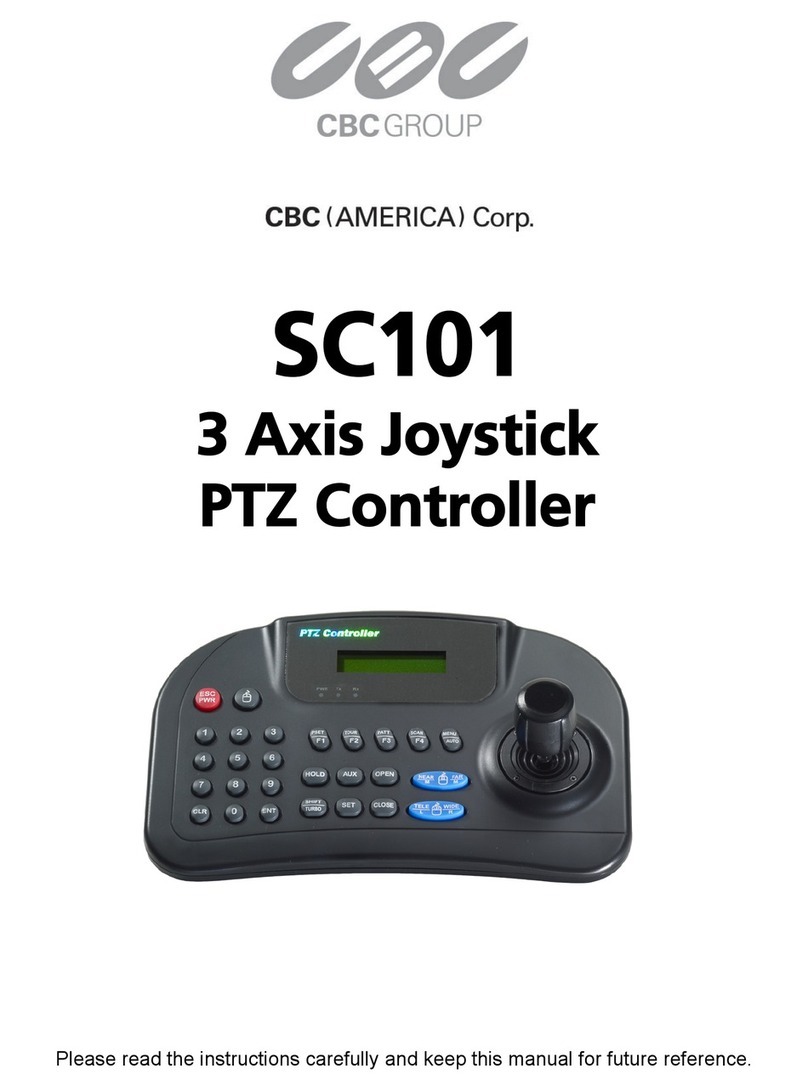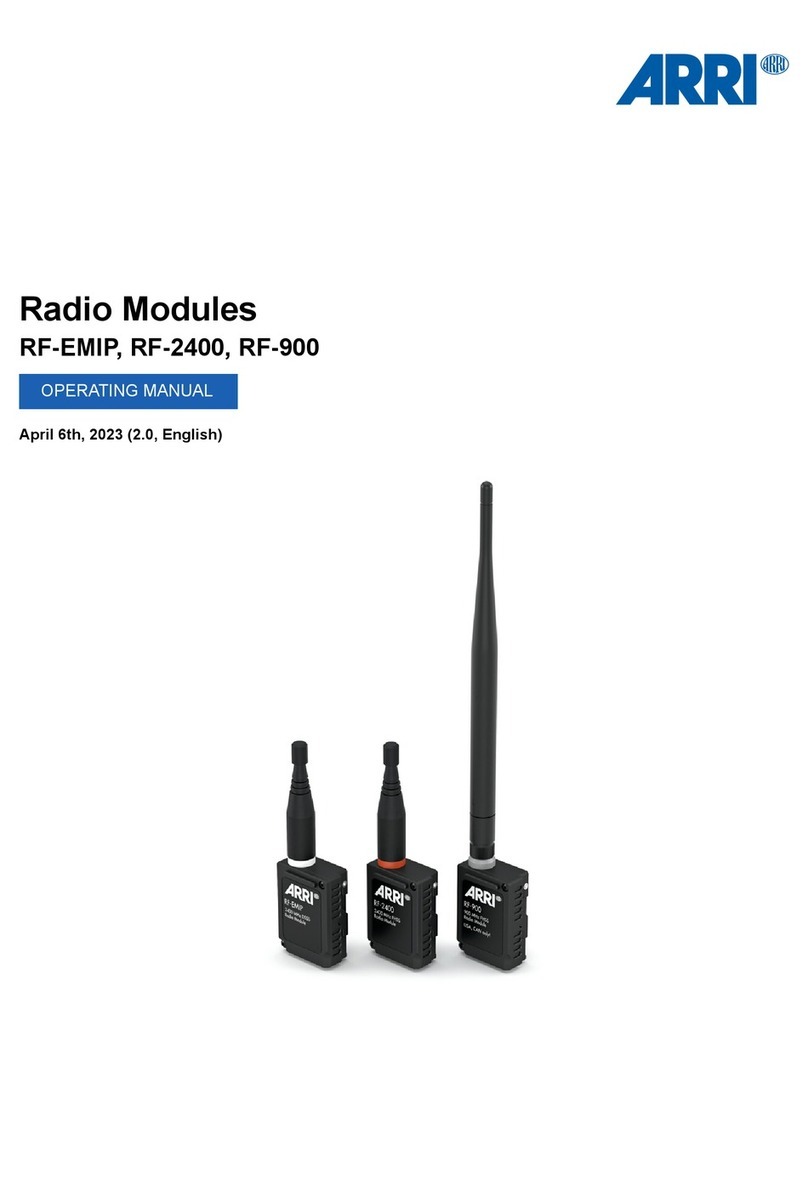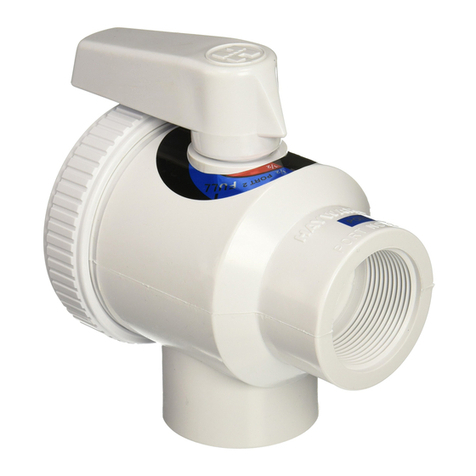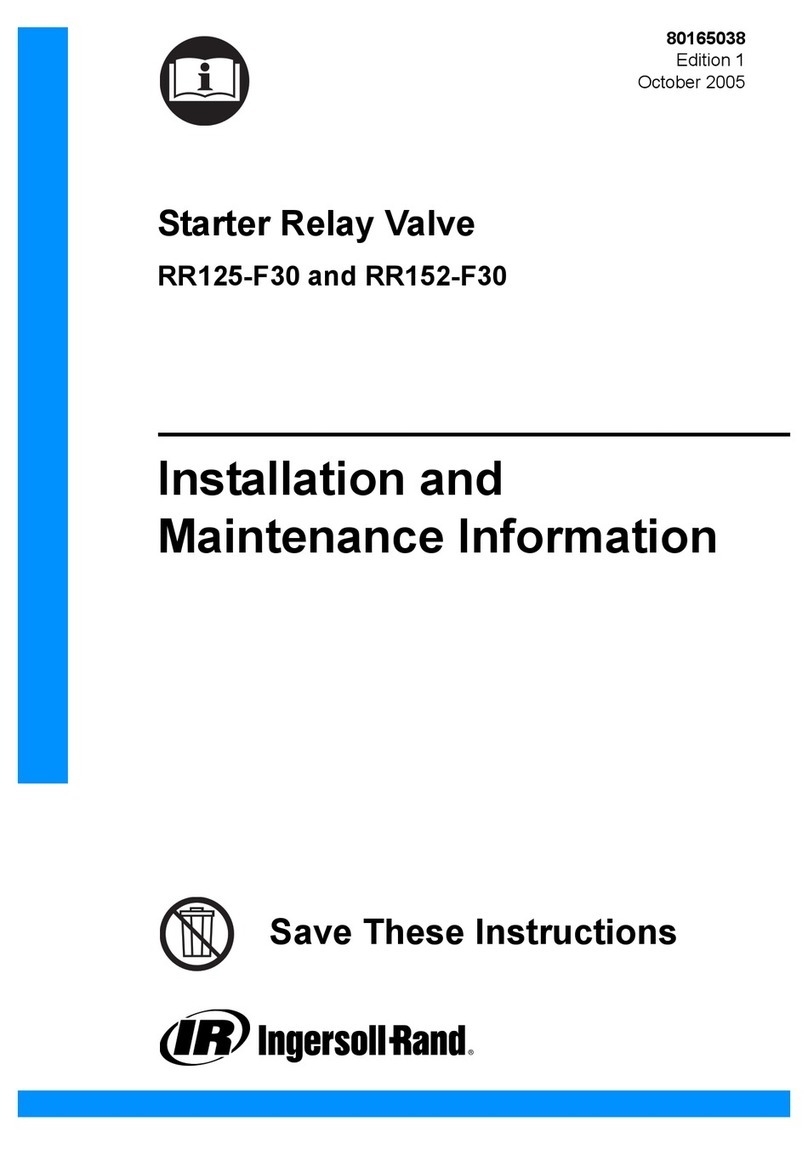
General
The OSC-01 module is a bank of three oscillators including ring-modulation, hard-sync as
well as individual control- and modulation-inputs. The analogue/digital hybrid-circuit derives
from the oscillator section of MFB-SyLITE II. Oscillators 1 and 2 use a condenser to create a
saw tooth wave. It is charged with analogue voltage and discharged periodically by digital
impulses. This principle is equivalent to a DCO and assures a stable oscillator frequency
combined with the sound of a real analogue waveform. In addition, OSC-01 also offers a
digital generated individually sounding saw tooth waveform for oscillator 3 which derives
from the first MFB-SyLITE.
Set-up
The OSC-01 module is fully compatible to Doepfer’s A-100 modular system - in size, bus-
power and CV/Gate voltage. Connect the 16-pin cable to a corresponded jack on the Doepfer
mainframe bus. Supply voltage needs to be +/- 12 volts, 5 volt is not needed. The wattage is
40 mA, the module size 16 TE (Teileinheiten) or 80.9 mm.
ATTENTION: Please check for correct polarity! The colored side of the connector-cable
needs to point downwards so that the cable is not twisted.
Function
The OSC-01 module can use the CV-signal of the Doepfer A-100 system-bus. Premise is, that
the bus itself is fed by a A-190 MIDI-CV module or a A-185 Bus-Access module. This CV-
signal conforms to the 1 volt/octave standard and is used for standard pitch control of
oscillators from a keyboard or sequencer. All three oscillators receive the same CV-
voltages/pitches from the system bus. To send individual pitches to these oscillators, these
need to be addressed from the front CV-inputs 1-3. Here, the system bus signal is ignored.
For general deactivation of the system bus signal, remove the CV jumper on the module’s rear
(top left).
CV-inputs 1-3 and audio-inputs 1-3 are coupled, meaning that a CV-signal connected to CV1
is distributed to control OSC2 and OSC3 as long as no further connections are patched. If
CV3 Input is patched, OSC 3 is decoupled from CV1 that still controls OSC2.
The same principle goes for the audio-outputs. Unpatched, Out3 carries the signals of all three
oscillators. Patching Out1 or Out2 excludes their signal from Out3. To avoid internal
distortion, the summing signal of Out3 is slightly attenuated compared to the individual output
of OSC3 at Out3.
OSC 1
OSC1 is tuned with the global Tune control. Wave1 selects between three waveforms: saw
tooth, square and 1/6 pulse. Pulse width is under control of CV4 (see below). The base octave
is set with Octave1 that selects between 16’, 8’ or 4’. Pitch is controlled by CV1 or the
system-bus control voltage. Voltages between 0 and 5 volts are accepted.
Additional CV-control can be achieved using CV4, e.g. for vibrato effects or pitch envelope
sounds. Depending on the setting of the according switch, CV4 controls pitch (OSC1) or
pulse width (PW1). This input accepts control voltages ranging from -5 to +5 volts. The
intensity of the modulation inputs can be set using CV4+5 that shares control for CV4 and
CV5. A further global pitch modulation of all three oscillators can be achieved using CV6
with the according switch set to ALL.
The audio output of OSC1 is at Out1 or at the shared output Out3.
Info Inputs CV1 to CV6 are not meant to be used with high frequency signals. You will not be
able to get tonal playable FM-sounds with OSC-01. However, atonal FM-effects are no
problem at all.
OSC 2
OSC2 is mostly identical to OSC1. Octave and waveforms are selected by adjacent controls,
just like OSC1. In addition to the base tuning controlled by Tune, Interval2 offsets its pitch
by +/- 1 octave to OSC1. The pulse width of OSC2 is preset to 1/3.
Pitch is controlled independently by input CV2 or commonly by the either CV1 or the system-
bus (with CV1 not patched). Additional CV-control can be performed using CV5, e.g. for
vibrato effects or pitch envelope sounds. Depending on the setting of the according switch
CV5 controls pitch (OSC2) or pulse width (PW2). This input accepts control voltages ranging
from -5 to +5 volts. The intensity of the modulation inputs can be set by CV4+5 that shares
control for CV4 and CV5. This input accepts voltages ranging from -5 to +5 volts and can be
attenuated by CV4+5.
Info: If OSC1 and OSC2 need to be modulated with individual intensity, use a VCA or mixer
to attenuate one the signals. CV4+5 always controls attenuation for both inputs. Patched this
way CV4+5 will act as a common fader for both modulations.
OSC2 can also be controlled by CV6 set to ALL.
The audio of OSC2 is at Out2 or at the shared output Out3. With Out1 not patched, Out2
will also carry the outputs of OSC1 and OSC2.
OSC 3
OSC3 is designed with a different feature-set. The saw tooth waveform sounds different to
OSC1/2. Pulse width is preset to 1/4 and cannot be modulated. The base octave is set an
octave below OSC1/2, just like a sub-oscillator. However, Octave3 and Interval3 allow to
match octaves as well as continuous and interval detuning.
OSC3’s pitch is either individually controlled by input CV3 or globally by CV1,CV2 or the
system-bus CV (see Function). Additional CV-control for vibrato or Pitch envelope sounds is
achieved using CV6. Depending on the setting of the according switch CV6 controls oscillator
3’s pitch (OSC3) or all oscillators’ pitches (ALL). This input accepts control voltages ranging
from -5 to +5 volts and can be attenuated by control CV6.
Out3 carries oscillator 3’s output. With Out1 and Out2 not patched, Out3 will carry all
oscillator’s outputs.
